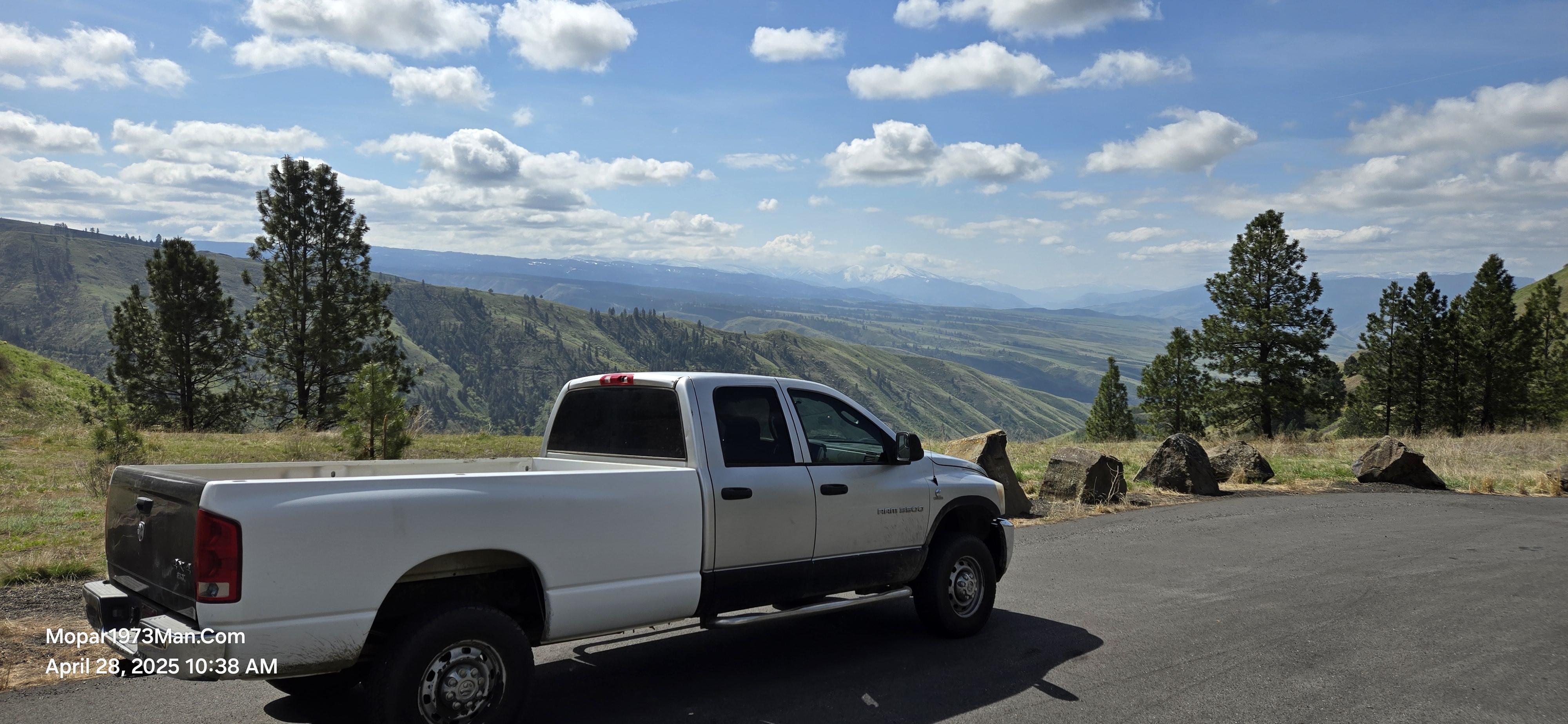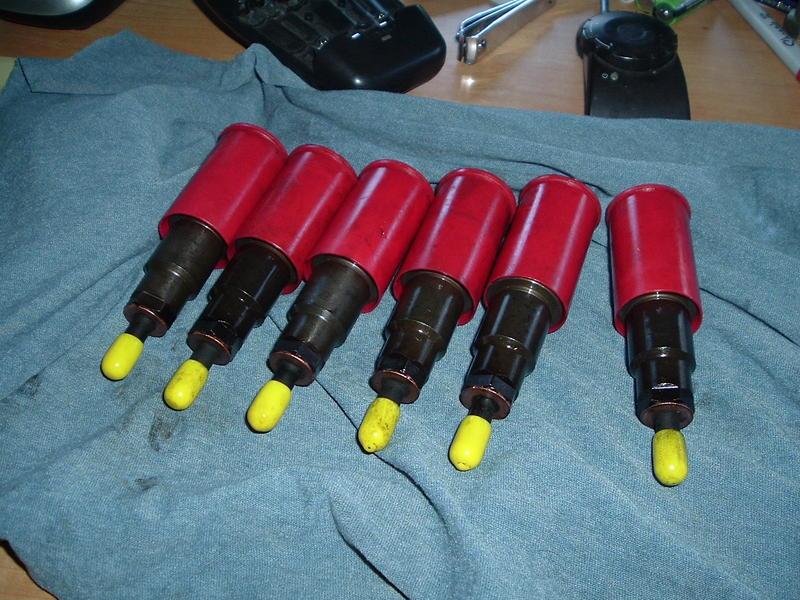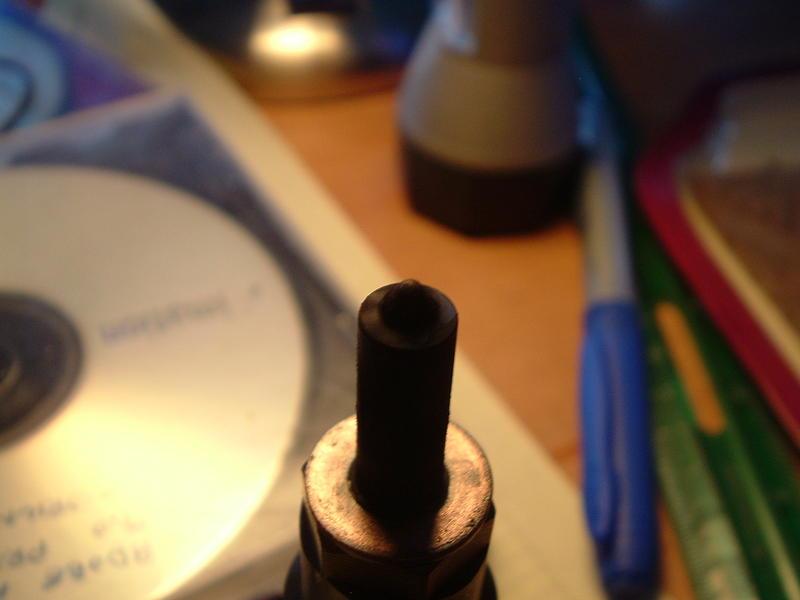
Everything posted by Mopar1973Man
-
wont start
Just give me a shout back with your finding and we can continue down the road...
-
New High Idle Video
The resistor in the plug is the most easiest way to test to see if high idle is present on a truck and only takes about 2 minutes to tell... I hate to say it but most likely the dealer didn't enable it, or you got a block heater plugged in or the IAT sensor is not working right...
-
first diesel w/problems
Well Welcome to the site... First off I suggest you fill in your signature over in the User CP so we know what kind of truck you got. Then as for the dodge Trans they are not the strongest tranny out there as a matter of fact there known to fail rather quickly. So I would start with basics and check the fluid condition and the smell. Have tried to change the ATF fluid? It might be a plugged filter? (guessin') I admit I'm not much of a Auto Trans guy maybe someone will chime in on the trans part and give you a hand. As for the keyless enter that as far as I can find in the FSM books is sole a Dodge dealer flash thing to program functions and such.
-
wont start
Ok jeffery... first off you might want to fill in your signature will all the information about your truck. This will help other help you with your post... Then as for your condition... I would first check for error codes and fuel pressure. These truck have got to have the worst fuel system out there and are known for serious failure right down to the injection pump. The funny part is that a cheap $40 dollar fuel pressure gauge will protect your truck from damage. Just got to keep the fuel pressure above 10 PSI at all times. But at this point check the fuel pressure and the error codes and report back with your finding...
-
How much power steering fluid??
Keep use posted and let us know how it turns out...
-
Winodws XP limitations
Well more and more I'm running into Windows XP limitations that cause issues. The biggest one is that most all software currently is produced for Windows XP SP2. this is the bare requirement to making windows XP working with other software. But you find that support for Windows XP is becoming extremely limited. Most software companies don't want to mess with a dieing horse so they putting there most effort and design power to Vista 64 Bit and Windows 7 64 Bit. Sad to say the days of 32 bit software is closing fast and dieing...:eek:
-
Global Warming Fraud
Well if its global climate change we need some more greenhouse gasses here in Idaho! In the 20 years I've live here this is some of the coldest winter I've ever been through so far... :eek:
-
How Many Miles Without Alternator?
Found another good pic that shows it all...http://forum.mopar1973man.com/picture.php?albumid=15&pictureid=78
-
How Many Miles Without Alternator?
I know it late but here is the PDC... http://forum.mopar1973man.com/picture.php?albumid=15&pictureid=66
-
How much power steering fluid??
With a dry system I would bet around 2 quarts tops. But the steering box is loaded with fluid, so is the hydro-booster so I would flush the system out with at least a quart with the old pump in before hooking up the new pump. This way the system is clean and your not pumping dirt into your new fresh pump.
-
Injector upgrade
Well first off I would like to thank Cajflynn for the wonderful donation of his used RV275 injectors, which happen to show up in todays mail. i'll get some pics up soon... In the mean time I'm going to gather up a few supplies for installing them. Does anyone know where I can get copper shims and fresh O-rings for these??? Holy Cow!!! :eek: I looked up the numbers on the injector and... 0432193635 / 4183 Comes back as either a RV275 or a 300 HP injector...:confused: Still much better than stock! :thumbsup: http://forum.mopar1973man.com/attachment.php?attachmentid=60&stc=1&d=1260397958 http://forum.mopar1973man.com/attachment.php?attachmentid=61&stc=1&d=1260397958 http://forum.mopar1973man.com/attachment.php?attachmentid=62&stc=1&d=1260397958
-
How Many Miles Without Alternator?
Ouch... That hurt... :eek:
-
HELP!!! No power and poor fuel milage
When was the last time you changed your power steering fluid? PS fluid should be flush and changed every 30K miles. If the fluid is dark and nasty then yes it needs to be changed.
-
HELP!!! No power and poor fuel milage
Well its a matter of chasing down all the plastics tube and checking for cracks, leaks, bad rubber, etc... Basically either the vacuum pump works or it don't but if the vacuum pump is bad its either leaking engine oil or the power steer and brakes are out... :eek:
-
Cold Weather Warning!
Well by Saturday we will been in the warmer temps again heading for 40*f weather with snow and rain!
-
How Many Miles Without Alternator?
Yeah I curious too...:agree:
-
Phantom Fuel Leak
Naw... I just fired up the truck cracked the line so it sprayed a bit then closed it down tight...
-
BHAF filters...
By bad... I was busy on the phone and helping other and lost my train of thought... Matter of fact look at this know I think the train jump the track. :rolleyes2:
-
A Dirty Word... Oil
Your still going eh? :eek:
-
HELP!!! No power and poor fuel milage
How much blow by are you getting from the crancase vent? This is a clue of if you got a vacuum leak. When you do have a vacuum leak the vacuum pump becomes a air compressor creates excessive by blow. :eek:
-
Cold Weather Warning!
Not really needed... Just run a winter front you should be good...:confused:
-
From Alaska-Need V44 Pump
Yeap he's a vendor here...:thumbsup: http://forum.mopar1973man.com/member.php?u=32
-
Cold Weather Warning!
What I'm finding is optimal intake temp should be around 90*F to 110*F... I've got a winter front on but with -10*F weather I barely see 50*F in the intake and it gettin way too cold and MPG's are suffering... :shocked:
-
BHAF filters...
The chip market is a mixed bag really... There is a lot of claims but hard to prove any of them... But like myself using the Edge Comp and running it wide open and keeping the boost low and the pyro low I'm turning 21-22 avg MPG and 25 max MPG. Like mild 1/8" inch aluminum... Like a old road sign would work awesome... It's the advanced timing...
-
A Dirty Word... Oil
Well since I bought my truck new I've been running Exxon XD-3 15w-40 for nearly 100K miles and then switched to Rotella for a round and OMG! I now know why the nickname RoSmella... Then Start hunting for Chevron Delo 15w-40 Which my buddy has been using in his truck for over 600K miles and still going... Buty even with all petroluem based products in my truck I reach 25 MPG for a MAX and aveage 21-22 MPG..






